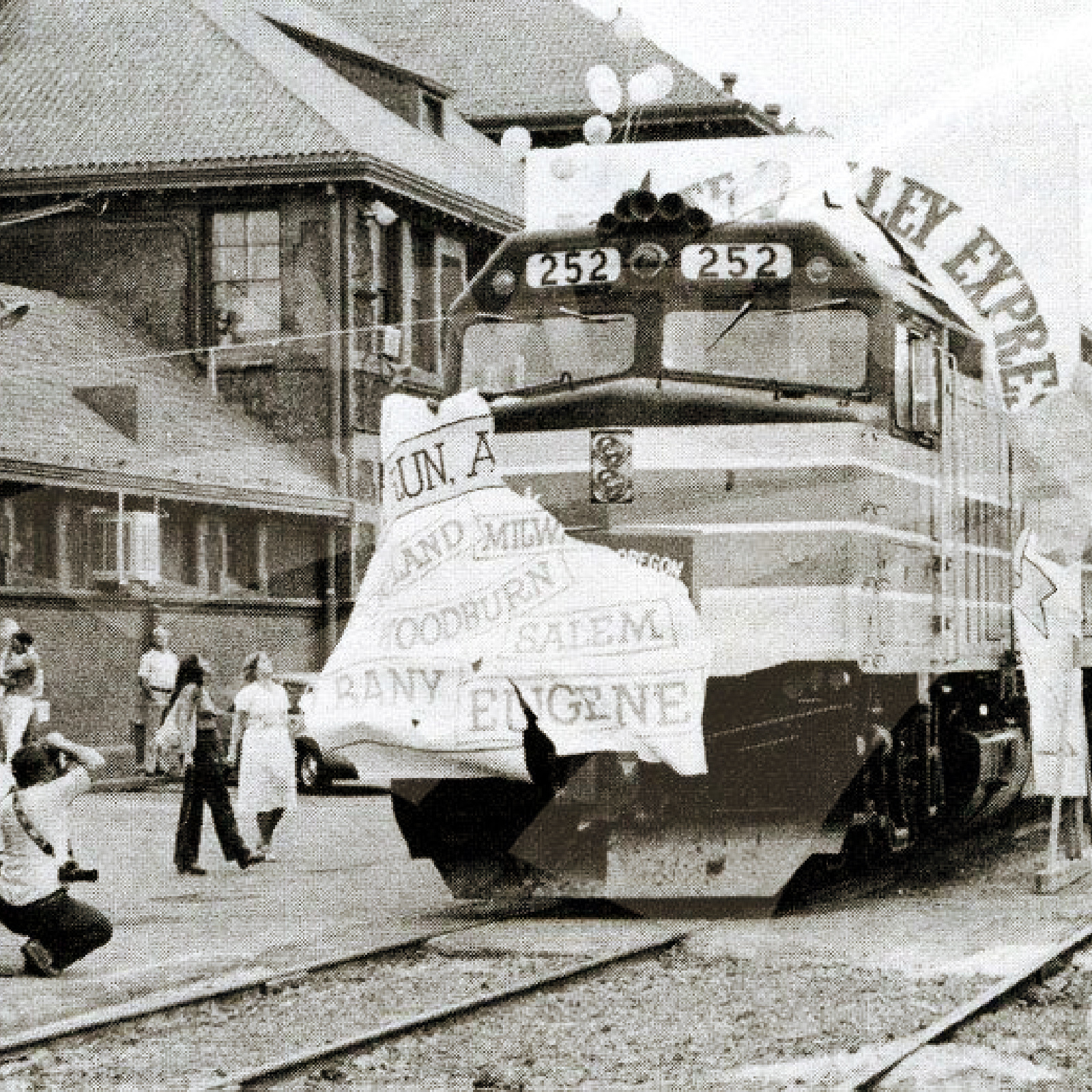Oregon's 165th Birthday and Anniversary of StatehoodLooking good for our age
First published 31 January 2022
February 14, 2024 Oregon celebrates its 165th year of statehood.
As Oregon hits this milestone, we consider the people and trails they blazed through time to get us to this point. Even as they built and maintained wagon roads and waterways, Oregonians eagerly anticipated the arrival of an even more powerful and transformative force: railroads. Railroads offered many promises to Oregonians eager to free themselves from the constraints of nature. While floods or low flow stopped water transportation on the Willamette River and other streams, and heavy rains washed out the Great Plank Road and other wagon roads, trains could run almost without regard to weather or season. Railroads could reach every corner of the state, including east of the Cascades where the lack of navigable waterways cut off farmers, ranchers, and other producers from markets. Most importantly, trains promised amazing speeds that seemed to smash through the natural barriers of time and distance.
Within just a few years of statehood, railroads had spread through every region of Oregon: in 1862, the Oregon Steam Navigation Company built tracks along the Columbia River at the Cascades and Celilo Falls; the Oregon & California Railroad connected Portland to Eugene by 1871 and reached California in 1887; and in 1883, transcontinental train transportation came to Oregon via the Northern Pacific Railroad. As with wagon roads and water transportation, federal investment helped speed railroad construction: federal surveyors started exploring the best routes in the 1850s, and the federal government gave away millions of acres to railroad companies, including 3.7 million acres to the Oregon & California Railroad.
By the end of the century, 1,850 miles of railroad track crisscrossed Oregon, utterly transforming the state’s environments. This dramatic transformation was made possible by immigrants, first and most prominently from China, but also Greece, Italy, Japan and elsewhere. Construction crews built bridges across rivers and canyons and blasted away mountainsides to make room for railroad beds, ties and rails.
Once built, the tracks allowed and encouraged Oregonians to accelerate environmental transformation: plant more wheat to send to distant markets, process more timber to transport on the railroads, and graze more cattle to herd towards rail shipping points. Trains carried not only the products of Oregon’s environments, but also the increasingly efficient and expensive agricultural equipment, logging machinery, and other industrial tools used to transform nature. And, of course, the railroads carried people: old and new immigrants, including people of color, moving through and throughout the state in pursuit of a better life.
Amtrak Cascades
On May 1, 1971, Amtrak Cascades began its passenger train corridor in the Pacific Northwest, operated by Amtrak in partnership with the U.S. states of Washington and Oregon. It is named after the Cascade mountain range that the route parallels and the 467-mile (752 km) corridor runs from Vancouver, British Columbia, through Seattle, Washington and Portland, Oregon to Eugene, Oregon.
Today, Amtrak Cascades is proud to continue our role as part of the Oregon Community in providing safe, comfortable travel throughout the state and the Pacific Northwest. We are honored to be part of the history of Oregon, but also appreciate our position as a vital part of the future of our region.

